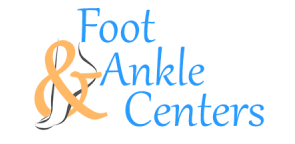How To Treat Corns And Calluses In 7 Ways
Foot pain and discomfort may be familiar, but that doesn’t mean they’re pleasant. Corns and calluses are common foot problems that can cause severe repercussions if left untreated.
These thickened areas of skin develop in response to friction and pressure, often from ill-fitting shoes or repetitive actions. While they are usually harmless, they can be bothersome and unsightly. Fortunately, there are several ways to treat these conditions effectively.
This article will explore seven methods to alleviate the discomfort and restore your feet to their smooth, healthy state.
What Are Corns and Calluses on Foot?
They are thickened areas of skin that develop because of repeated friction, pressure, or irritation. Corns typically appear small or round on the toes or sole's tops and sides. They can also be cone-shaped bumps with a central core.
They can be painful, especially when pressed. On the other hand, calluses are larger, flat areas of thickened skin that commonly form on the heels. They may grow on the balls of the feet or the palms of the hands.
While calluses are usually not painful, they can cause discomfort or a dull ache when pressure is applied. Both conditions are the body's natural defense mechanism to protect underlying skin layers from further damage.
However, corns and calluses on feet can become problematic if they grow too large or cause pain or difficulty with walking or other activities. Proper footwear, hygiene, and regular exfoliation can help prevent their formation.
Top 7 Ways to Treat This Foot Condition
If you’re suffering from this condition, get help. You can start by reading the following treatment options.
1. Wear Properly Fitted Shoes
One of the most essential steps in treating and preventing these skin formations is to wear shoes that fit correctly.
Hence, avoid tight or narrow shoes that squeeze your toes together. They can increase friction and pressure on the skin. Instead, go for shoes with a wide toe box and ample cushioning to provide adequate support and reduce friction.
Prevent foot corns and calluses by letting go of high-heeled shoes. These can also increase pressure on the balls of your feet and toes, leading to this condition. So, pick shoes with low heels or flats to distribute weight more evenly across your feet.
Use orthotic inserts or custom-made shoe inserts to correct foot alignment or provide additional support. However, pick one with removable insoles or a roomy fit to accommodate them comfortably.
2. Use Protective Padding
To protect calluses from further irritation, consider using protective padding. Moleskin or gel pads can be placed over the affected area to cushion and reduce friction. Ensure the padding is placed securely to prevent it from shifting during movement.
These anti-corn and callus pads provide a protective barrier between the skin and the source of pressure. When placed over areas prone to corns or calluses, such as the toes or balls of the feet, they absorb shock and reduce friction. Thus, they prevent the formation of thickened skin.
Additionally, gel pads and moleskin can redistribute pressure more evenly across your foot. In essence, they reduce the likelihood of developing new corns or calluses in those areas.
3. Soak and Exfoliate
Immersing your feet in a comforting bath of warm, soapy water is a simple yet effective way to soften your skin. They can aid in the effortless removal of dead cells and prevent foot corns and calluses.
Following a 10-15 minute soak, delicately exfoliate the targeted areas using a pumice stone or foot file, revealing smoother, rejuvenated skin.
4. Apply Moisturizer
Keeping the skin hydrated is essential for preventing corns & calluses from drying and cracking. After exfoliating, apply a thick moisturizer or foot cream to the affected area.
Look for products containing ingredients like urea or salicylic acid, which can help soften the skin and promote healing.
5. Use Orthotic Inserts
Orthotic inserts or insoles are effective in redistributing pressure on the foot, offering relief from the discomfort of corns and calluses.
Available over-the-counter or custom-made by a podiatrist, they cater to your unique foot shape. Hence, they address any underlying biomechanical issues contributing to the problem.
6. Trim Corns Carefully
If you have corn causing pain or discomfort, you may need to trim it to relieve pressure carefully. However, it's essential to do this safely to avoid foot infection or further damage to the skin.
Soften the corn by soaking your foot in warm water, then gently use a sterile blade to trim away the excess skin. Avoid cutting too deeply or into healthy tissue.
7. Seek Professional Treatment
If home remedies are not providing relief or if you have severe or recurring foot corns and calluses, it's essential to seek professional treatment from a podiatrist.
They can offer various treatments, including trimming, debridement, or prescribing medication to reduce inflammation and pain. Sometimes, they may recommend surgical removal of the corn or callus.
Generally, treating these conditions requires proper foot care, protective measures, and, in some cases, professional intervention.
By following these seven methods, you can effectively manage and prevent calluses and corns, allowing you to enjoy improved foot health and comfort.
Always prioritize foot hygiene and wear comfortable, well-fitted shoes to reduce the risk of developing these common foot problems.
Get Professional Help From The Foot and Ankle Center
Don't let foot discomfort hold you back. Take the first big step towards a healthier, pain-free foot by scheduling an appointment with the expert podiatrists at the Foot and Ankle Center today.
Let us provide personalized care and tailored solutions to address your specific foot concerns. Trust us to guide you on the path to better foot health and improved mobility.
Your feet deserve the best. Free them from corns and calluses today — contact us now!


